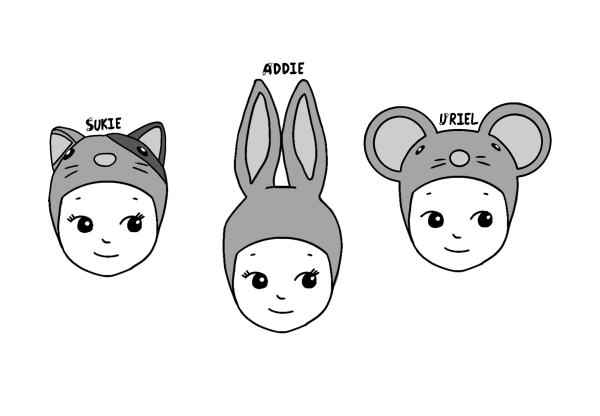Distraction or Concentration?
The Fidget Toy That’s Spinning the World into Debates
We’ve all heard this admonition: “Don’t cross the street while looking at your phone!” Until recently, practically nobody heard that concern about small spinning pieces of plastic.
Fidget toys are a popular trend not only among the students at Parker, but among students around the country. Teachers at Parker are becoming frustrated with fidget toys, some recently banning them from classrooms around the lower school and making their views clear to the students who use them.
Due to the latest popularity surge of these fidget toys, entrepreneurs all over are trying to sell them to classmates. Freshman Noah Rauschenberger has been a builder of these fidget toys since they first began getting popular. “I started making the fidget spinners around the end of February,” Rauschenberger said. “Around Christmas time my Dad got a 3D printer, which is what I’ve been making the spinning toys with.”
The fidget toys can sell from 5 to 50 dollars depending on where you decide to buy them. “I’ve made a couple hundred dollars selling the fidget toys,” Rauschenberger said. “Everyone wants them now that they’re growing in popularity.”
Some teachers, both nation-wide and here at Parker, are not pleased with the spinners. Numerous teachers have taken to twitter with photos of the spinners marked with the hashtag #teacherproblems with such captions as “Today, I will be mostly burning fidget toys.”
Students are beginning to notice their teachers growing irritation with fidget toys. “I’ve been in a couple classes when a teacher has taken away a fidget spinner from someone,” Freshman Ava Stepan said. “They consider them toys and think that high schoolers shouldn’t be carrying toys around with them.”
“The words ‘fidget toy’ and ‘fidget tool’ have been used interchangeably,” Upper School Learning Resources teacher Julie Holman said. “Part of the issue is the use of the wood ‘toys,’ instead of being referred to as fidget ‘tools.’”
When it comes to spinners, Holman stands her ground. “I think that they just don’t seem to really serve a purpose in the classroom,” Holman said. “To me, they require a lot of concentration to spin around, and more attention than something you’re just holding in your hand.”
Based on what she’s observed of students in Parker’s upper school, the spinners may be causing more harm than good. Holman said, “It’s distracting maybe not so much to the kid who’s using it, but certainly for the kid next to or behind him or her.”
The toy was invented and patented in 1993 by a woman from Orlando named Catherine Hettinger after watching young boys throw rocks at police officers in Israel. Her goal was to create a way to distract kids into releasing their built-up energy into a toy, rather than lashing out with aggression. ToysRUs, Walgreens, and many other stores all over the world have ever since been selling the spinners that have become a worldwide phenomenon.
The design, according to “USA today,” consists of “two or three prongs with circles in them, along with a circular pad in the middle where you hold the device with your finger and thumb.” In order to use the toy, fingers go on either side of the center pad to allow the spinner to not create contact with anything else but the center. They’ve become increasingly more popular, even garnering attention from Forbes magazine as the “must have office toy of 2017.” For most people, the noise of the plastic spinning around is soothing.
But “Hottest toy of the year” isn’t the only label attached to these spinners. They’re also marketed as aids for attention deficit/hyperactivity disorder (ADHD), autism, and anxiety disorder. When studies first came out years ago distinguishing a link between an increase of focus and constructive fidgeting for those with ADHD, retailers were the first to create toys with hope that they would become a remedy for distraction. Distributors such as Amazon are “beginning to promise greater concentration for people with these conditions.”
Past fidget toys include the fidget cube, a cube with many functions on each one of the sides allowing the user to press buttons, spin gears, flip a switch, and spin a rotating dial. Slime and squishy putty have also been popular this year.
None of these has reached the popularity of fidget spinners. These pieces of plastic–objection by some teachers notwithstanding–have been taking the world by storm.







